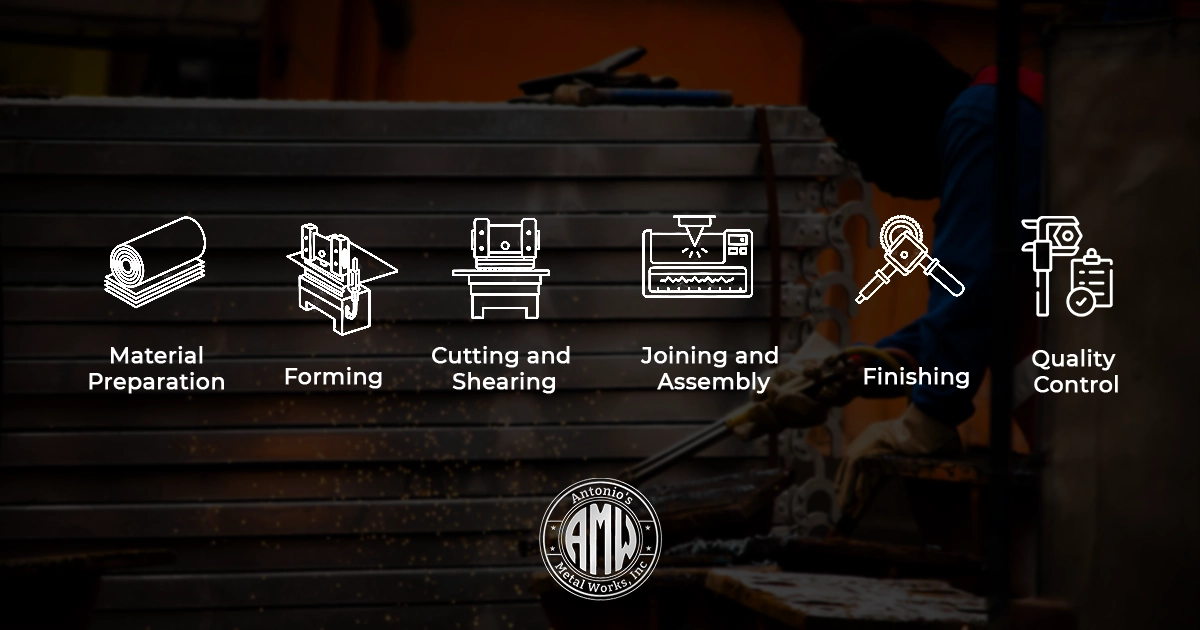
Imagine a material so versatile that it shapes the world around you: your car, your office building, even the airplane you might fly in next week. That material is sheet metal, a key part of modern manufacturing. Its strength, flexibility, and adaptability make it essential in industries from automotive to aerospace and construction.
But how does a plain, flat sheet of metal turn into these precise, durable components? The answer is the process for producing sheet metal. Understanding this sheet metal manufacturing process is important for manufacturers, engineers, and hobbyists alike from the sheet metal fabrication experts. Step by step, this guide explains how raw metal becomes the essential products and structures we rely on every day.

The sheet metal production process involves several key steps that transform raw metal into functional, durable, and high-quality components. Each stage plays a vital role in ensuring precision, strength, and finish.
Before shaping begins, raw sheet metal is prepared. This includes cutting, cleaning, and surface preparation to ensure a smooth, defect-free start. Proper sheet metal preparation is essential for consistent results.
The next step is forming, where the metal is shaped using rolling, bending, or stamping. Depending on the project, manufacturers use hot or cold forming techniques. This is a key part of the sheet metal forming process and includes various metal bending techniques.
Once formed, the metal may need precise cuts. Techniques include laser cutting, plasma cutting, punching, and shearing. These methods ensure exact dimensions and smooth edges, making sheet metal cutting methods like laser cutting sheet metal crucial for quality parts.
Shaped pieces often need to be combined. This is done through welding, riveting, or other fastening methods. Proper sheet metal joining ensures strength and durability, with metal welding processes playing a central role.
To protect and enhance the appearance, the metal goes through finishing. This can include polishing, coating, painting, or applying corrosion protection. These sheet metal finishing techniques improve both durability and aesthetics.
The final step is quality control. Every sheet is checked for strength, thickness, and surface defects to meet high standards. Effective sheet metal quality control and metal inspection processes guarantee reliable, high-quality products.
The sheet metal fabrication or production process transforms raw metal into strong, precise, and functional components used in industries like automotive, aerospace, and construction. From material preparation to finishing and quality control, every step ensures high-quality results. Understanding this process is essential for manufacturers, engineers, and hobbyists who want to create reliable, durable, and well-crafted metal products.
Ready to see precision sheet metal work in action? Visit Antonio’s Metal Works today to explore professional sheet metal services, expert fabrication, and top-quality finishes.